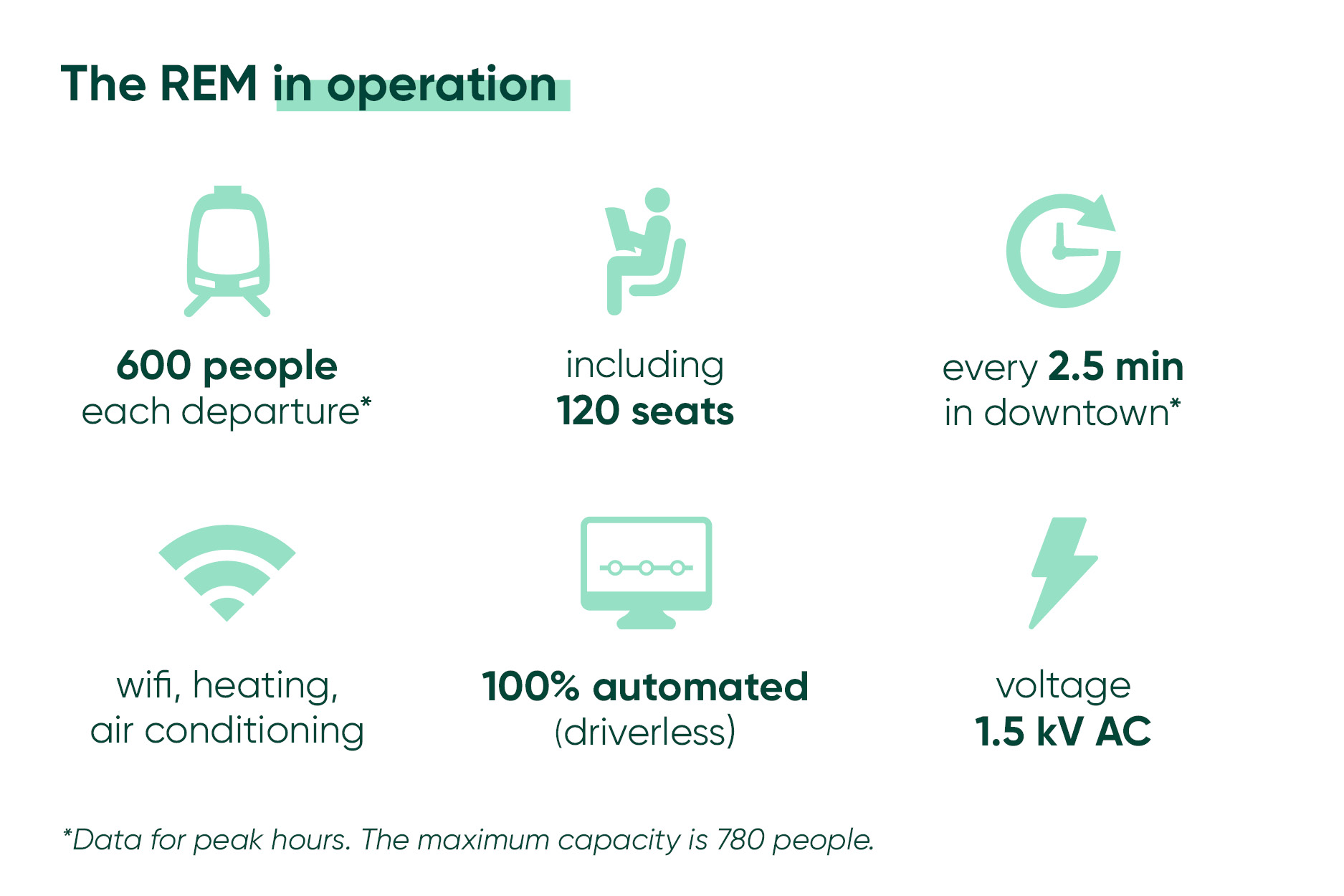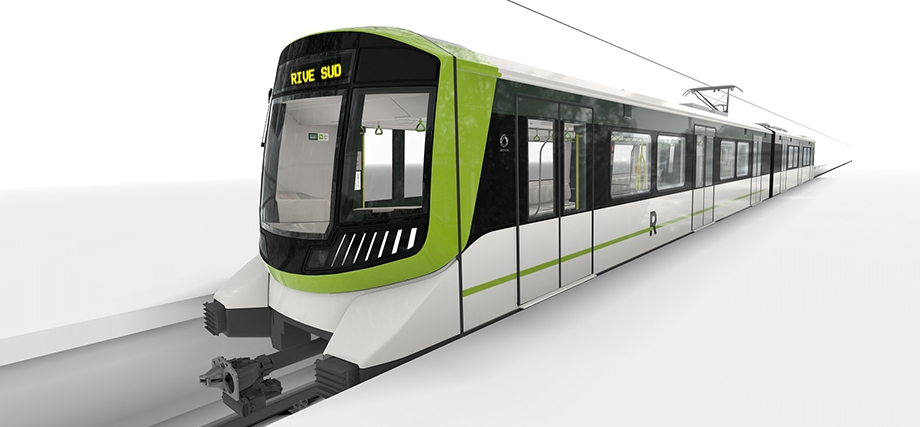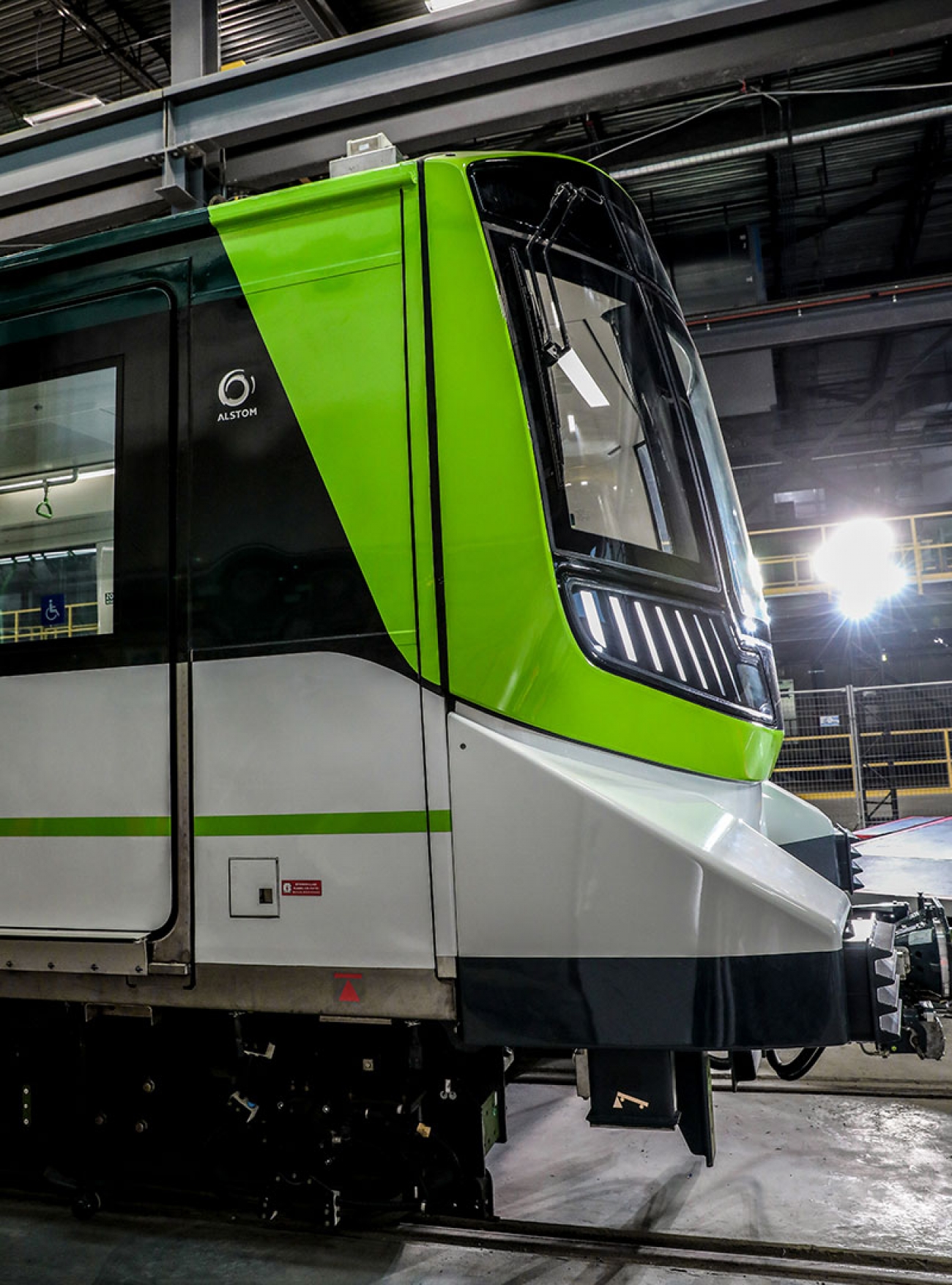Go further
Discover REM's 100% automated light metro cars. First departures from 2022!

FAQ
Harsh winter conditions represent a significant challenge for any train or light rail system operator. For the purpose of the REM’s winter plan, specialized equipment will be used for maintenance and a dedicated field team will make sure the system runs smoothly.
The REM’s high frequency will also allow us to keep a close eye on operations at all times, so we can quickly identify any issues. Since trains will be running regularly over the tracks, this will help prevent ice and snow from accumulating like it would on a highway. In exceptional cases, it will be possible to keep the REM running through the night, to prevent precipitation from accumulating on the track and catenary.
The REM will run in part on existing rail corridors. For safety reasons, level crossings will be eliminated. In places where level crossings currently exist, the road will be raised or lowered or the railway track will be elevated (the REM will run on an elevated track above the road).
Step aboard the REM
In July 2018, we launched a consultation to gather your comments. The outcome: the Saint-Laurent model came out on top, with 42% of the votes! Design, capacity, speed… Check our dedicated page to learn more about the technical features.

